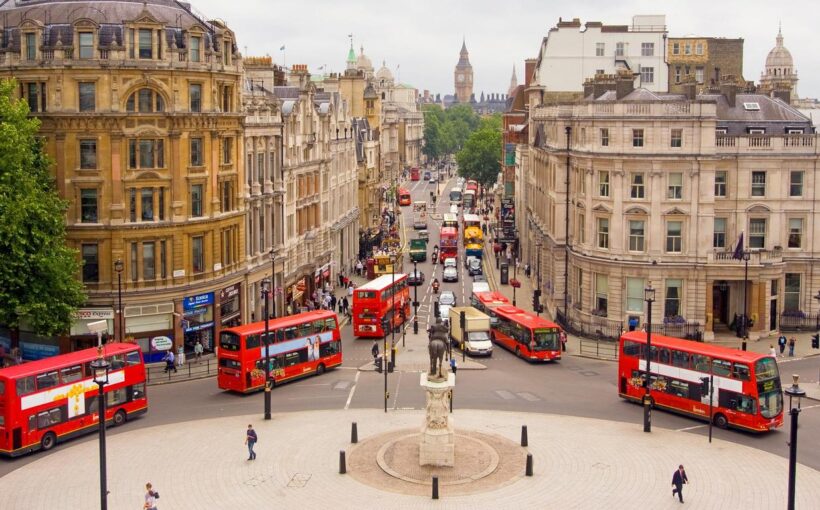As viewers of Bridgerton know, finding the right suitor is an art, requiring charm and beauty. It helped to be a diamond (the most eligible woman of the season, as chosen by the Queen), but all young ladies benefited from careful attention to their dress and manners. In the most recent series we see Penelope Featherington, once a wall flower, undergo a glow up in order to been seen and considered as serious mate during her third London season.
A recent article in The Spectator claimed that the storyline following Featherington this season is implausible because a woman needs to be svelte to win a handsome man. But the Regency period (1811-1820) offered more generous definitions of beauty, beyond thinness.
As we see in the show, it is not enough to sport a new hair style or beauty regimen. Peneleope also becomes more confident in herself, which in turn makes her more charming. As at least one popular advice book from 1811, which was written by “A Lady of Distinction”, made clear: there needs to be harmony of body and mind to ensure beauty, with each part enhancing the other.
This was certainly the case in the Regency period where across Europe, physicians, moralists and perfumers had a lot of advice for fashionable young ladies and their mothers. Many of these tips stressed that beauty came from good taste and deportment.
Here are two key tips that would have served the ladies of society well.
Dress for your ‘type’
Lady Whistledown would, no doubt, have approved of A Lady of Distinction’s The Mirror of the Graces (1811), which was intended to help young ladies with their social skills and knowledge of dress and adornment. This was exactly the sort of book that might have aided Featherington during her transformation early in season three.
No one’s 20s and 30s look the same. You might be saving for a mortgage or just struggling to pay rent. You could be swiping dating apps, or trying to understand childcare. No matter your current challenges, our Quarter Life series has articles to share in the group chat, or just to remind you that you’re not alone.
The Lady of Distinction identified two types of women. The first were the ethereal sylphs, rather like the Bridgertons, who were slender, flexible, and willow-like. They could wear the more tender (or, light) shades of green, pink, yellow, lilac or blue.
The second type were majestic, “generally of a stately make; her person is squarer, and has more embonpoint” – in other words, they had curves. Such women, like Featherington, displayed their charms best through a “grave and firm” step and excellent posture that drew attention to their fine bosoms.
Their beauty was also best highlighted by deeper colours, such as purple, crimson, scarlet, or black.
The top lesson from The Mirror of the Graces was that all women could be beautiful. They simply needed to know how to dress in simple, tasteful ways to show themselves to their best advantage. Too many jewels or adornments (rather like the Featheringtons’ and Cressida Cowper’s outfits) could highlight one’s physical imperfections. Featherington’s choices of more flattering colours and simpler cuts revealed instead her natural beauty.
Be charming
In the first half of season three, Featherington attempts to improve her deportment (carriage, behaviour and manners) by becoming more charming. As she gains confidence, she attracts the attention of Colin Bridgerton and Lord Debling.
She may have been right to ask for Colin Bridgerton’s assistance, given his travels and interest in European women. The Lady of Distinction noted that although English women might have greater physical beauty, they compared unfavourably with European women who were much better at attracting others. Charm, crucially, was not about artifice, but about knowing one’s interests and strengths, and not being afraid to share them with other people.
Advice writers had much to say on manners and conversation. Take the anonymous book, The Female Instructor (1816), which was aimed at young women, and offered advice on courtship and marriage, as well as various recipes and remedies for daily life. When it came to courtship, gentle manners and agreeable conversation were important for attracting honourable men – by which the author meant, a man who had good character and morality, and no taint of venereal disease.
A writer of religious conduct books, Thomas Gisborne, advised young ladies in 1813 that intellectual women (like Eloise Bridgerton and Featherington) often found conversation difficult, needing to fight a tendency to encourage prattle “because it amuses them by rendering the speaker ridiculous”. Penelope Featherington was certainly guilty of this in her later-ego Lady Whistledown. Instead, pleasing conversation came from virtue, judgement and polished taste, which is what appealed to Lord Debling.
Deportment began with good manners, but charm depended on an individual’s ability to let their personality shine, which drew people towards them. Queen Charlotte, for example, was deeply impressed with Francesca Bridgerton playing the pianoforte for herself rather than to display her talents publicly. This was one of the greatest challenges for young ladies, according to Gisborne; trained in ornamental accomplishments, it was easy for women to seek admiration constantly. Much rarer were the women who pleased themselves.
As for Penelope Featheringtonre’s emergence as a beauty, the physical transformation played only a small role. Showing a good dress sense was one thing, but it was good deportment that brought harmony to the mind and body. A charming woman may have been well dressed, but above all, she was confident.
![]()
Lisa Smith has received funding from the Social Sciences and Humanities Research Council Canada and the British Academy. She is the Chair for the Society for the Social History of Medicine.



